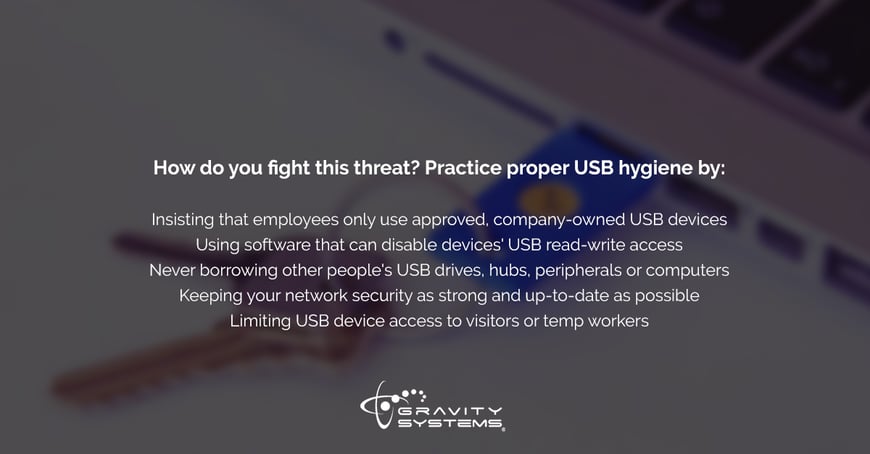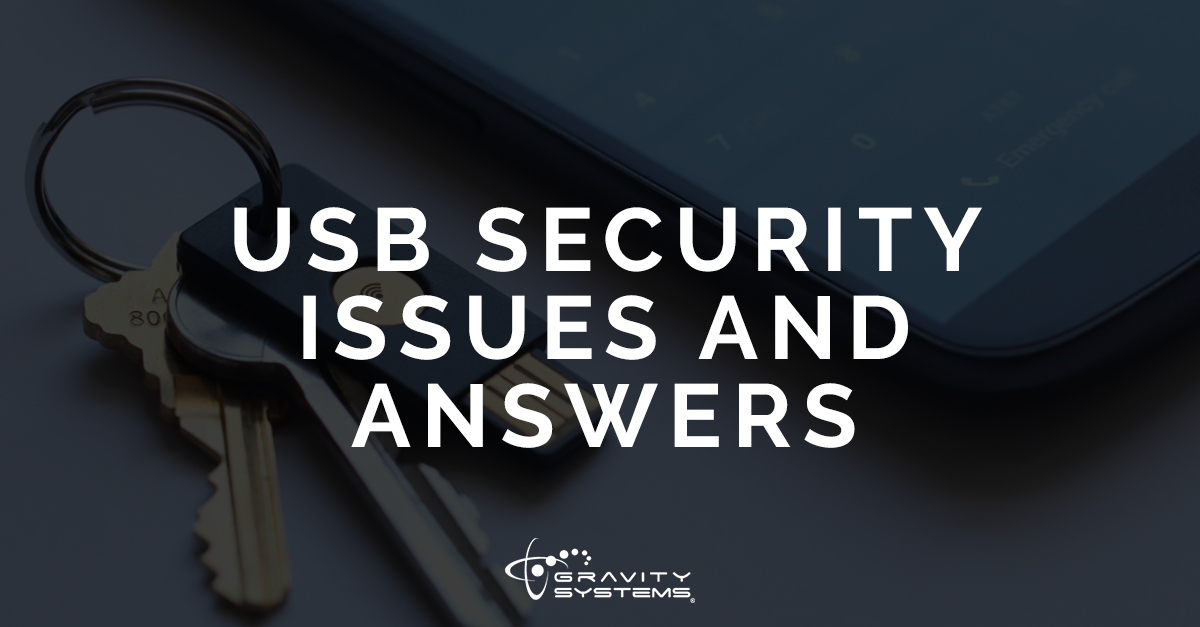The trusty USB flash drive is the “Swiss Army knife” of quick, convenient, on-the-go data storage and transfer – but just how trusty is it? Recent studies have exposed some serious security vulnerabilities in USB devices, ports, and usage habits. Let's look at where these weaknesses lie, the risks your organization could face, and some tips on USB best practices from our Austin tech support team.
On the surface, a USB plug-in seems like a petty safe maneuver; a device goes into a port for simple two-way data transfer. Unfortunately, that transfer isn't as efficient as you might think. Australian researchers recently confirmed that up to 90 percent of USB devices may “leak” data when connected to another device – potentially making your precious data up for grabs by unscrupulous third parties. Even charging your smartphone in a public place via a USB connection can expose business or personal data to thieves. The bad guys capture the leaking data through their own devices connected to the same USB hub.
USB devices can also be tampered with to log keystrokes or capture other data, then left lying around for unthinking individuals to claim – and use. Research shows that 75 percent of people will pick up a random USB drive they see lying on the ground. Even USB-capable objects such as table lamps can be turned into data-stealing weapons.

How do you fight this threat? Practice proper USB hygiene by:
Insisting that employees only use approved, company-owned USB devices
Using software that can disable devices' USB read-write access
Never borrowing other people's USB drives, hubs, peripherals or computers
Keeping your network security as strong and up-to-date as possible
Limiting USB device access to visitors or temp workers
Contact our team to learn more about how to keep your systems and information safe!
Related Post: Are You Fixing the Wrong IT Problem?

_NO_BCS_bigger_weird_green_clear.png?width=100&name=for-website_large(save-at-500-tall)_NO_BCS_bigger_weird_green_clear.png)


